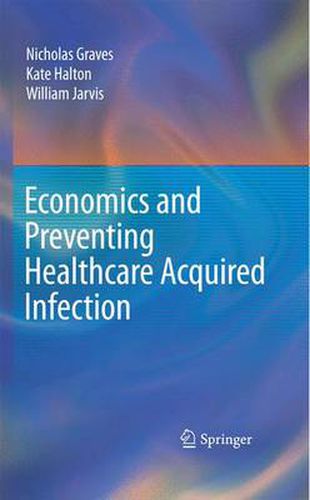Readings Newsletter
Become a Readings Member to make your shopping experience even easier.
Sign in or sign up for free!
You’re not far away from qualifying for FREE standard shipping within Australia
You’ve qualified for FREE standard shipping within Australia
The cart is loading…






This title is printed to order. This book may have been self-published. If so, we cannot guarantee the quality of the content. In the main most books will have gone through the editing process however some may not. We therefore suggest that you be aware of this before ordering this book. If in doubt check either the author or publisher’s details as we are unable to accept any returns unless they are faulty. Please contact us if you have any questions.
Reasons for Writing This Book The published literature on the economic appraisal of healthcare acquired infection (HAI) is described by phrases such as: With so many virtues of the cost-benefit approach identified, it is perhaps puzzling why greater use of economic appraisal has not been made in the area of infection control [1] Clinicians should partner with economists and policy analysts to expand and improve the economic evidence available [2] the quality of economic evaluations should be increased to inform decision makers and clinicians [3] The economics of preventing hospital-acquired infections is most often described in general terms. The underlying concepts and mechanisms are rarely made explicit but should be understood for research and policy-making [4] The aim of this book is to describe how economics should be used to inform decisi- making about infection control. Our motivation stems from the previous quotes which show economics is being used within the infection control community, but not to its full potential. Our expectation is that you do not have any formal training in economic analyses. Economic analyses have been used for many decades to argue for increased funding for hospital infection-control. In 1957, Clarke [5] investigated bed wastage in British hospitals due to Staphylococcus aureus in patient’s wounds. She concluded …. the average length of stay in hospital of patients whose wounds were infected with Staph.
$9.00 standard shipping within Australia
FREE standard shipping within Australia for orders over $100.00
Express & International shipping calculated at checkout
This title is printed to order. This book may have been self-published. If so, we cannot guarantee the quality of the content. In the main most books will have gone through the editing process however some may not. We therefore suggest that you be aware of this before ordering this book. If in doubt check either the author or publisher’s details as we are unable to accept any returns unless they are faulty. Please contact us if you have any questions.
Reasons for Writing This Book The published literature on the economic appraisal of healthcare acquired infection (HAI) is described by phrases such as: With so many virtues of the cost-benefit approach identified, it is perhaps puzzling why greater use of economic appraisal has not been made in the area of infection control [1] Clinicians should partner with economists and policy analysts to expand and improve the economic evidence available [2] the quality of economic evaluations should be increased to inform decision makers and clinicians [3] The economics of preventing hospital-acquired infections is most often described in general terms. The underlying concepts and mechanisms are rarely made explicit but should be understood for research and policy-making [4] The aim of this book is to describe how economics should be used to inform decisi- making about infection control. Our motivation stems from the previous quotes which show economics is being used within the infection control community, but not to its full potential. Our expectation is that you do not have any formal training in economic analyses. Economic analyses have been used for many decades to argue for increased funding for hospital infection-control. In 1957, Clarke [5] investigated bed wastage in British hospitals due to Staphylococcus aureus in patient’s wounds. She concluded …. the average length of stay in hospital of patients whose wounds were infected with Staph.